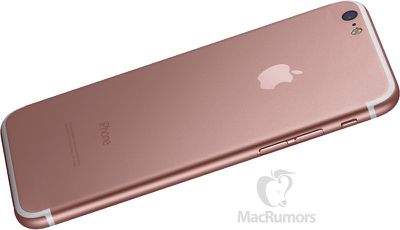According to a new report from Economic Daily News (via DigiTimes), Taiwan Semiconductor Manufacturing Company has plans to double the output capacity of its 16nm chip production from 40,000 12-inch wafers in February to 80,000 in March. The news corroborates previous reports that suggested TSMC was ready to expand its 16nm FinFET production capacity in the second quarter of 2016, solely for the iPhone 7.

In a recent investors meeting, TSMC's co-CEO CC Wei said that the company's percentage share of the 14/16nm market is expected to increase from 40 percent in 2015 to over 70 percent in 2016. Apple isn't specifically referenced in the report today, but among TSMC's other purported 16nm customers -- Xilinx, MediaTek, HiSilicon, Spreadtrum and Nvidia -- it is one of the bigger names.
The upcoming ramp-up of 16nm production capacity will buoy TSMC's sales performance starting March, the report quoted market watchers as indicating. The foundry's 16nm FinFET processes consisting of 16FF (16nm FinFET), 16FF+ (16nm FinFET Plus) and 16FFC (16nm FinFET Compact) will generate more than 20% of its total wafer revenues in 2016.
Previous rumors around the iPhone 7 production have pointed to Apple picking TSMC to be the sole manufacturer of the smartphone's processor, presumably called the A10. The foundry was said to have won over Apple because of its 10nm manufacturing process, and a likely attempt at avoiding the dual-sourced A9 chip blowback Apple saw in the iPhone 6s and iPhone 6s Plus.
























Top Rated Comments
20% expected.
We have read that the dual camera is still a year away. That the 10nm chip is still a year away. That the new oled displays are still at least a year away. That the iPhone will be the exact same dimensions minus one mm in thickness due to an improved thinner display..
Also note that new 4" iPhone will be in a old case. I would imagine they would have crafted a completely new one unless it wasn't just a kind of placeholder until the next complete iPhone iteration.
I think Apple is working to to get all those things into the iPhone but they are just not quite ready.
Let's hope a TSMC chip is guaranteed in all iPhones so as to ensure better battery life.
Yeah, a 20% speed jump is what I'd consider minimal. The A9 was nearly twice as fast as the A8 and at least twice as fast as the A7.
The A8 was like up to 30% faster than the A7 I believe.
[doublepost=1456938442][/doublepost]More like they can't because profit margins.
What that means is higher performance in the same thermal envelope. That means Apple would have to be willing for the SoC to consume more power, which means less battery life or a bigger battery.
Also, if the A9 was indeed of TSMC's 16FF, then the move to 16FF+ would have a few small performance benefits on its own, similar to Samsung's own 14LPP ('http://www.samsung.com/semiconductor/foundry/process-technology/14nm/') (10%).
This post ('https://www.macrumors.com/2015/11/06/tsmc-a10-production-info-wlp/') goes into InFO in more detail.
edit: one last note- they talk about removing the substrate. That would be the substrate above the die between the memory and application processor. You still need the interface between the die and board, which is a substrate. With InFO WLP, you just route all your dies on that one piece. To have no substrate would be chip-on-board, which isn't possible because board vendors can't make boards with the extremely fine pitches that logic die bumps have. That's why vendors are starting to introduce actual passive silicon wafers (interposers) into the process to get really dense routing to greater I/O to memory and other devices.